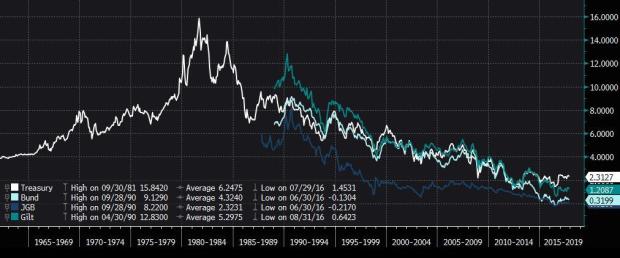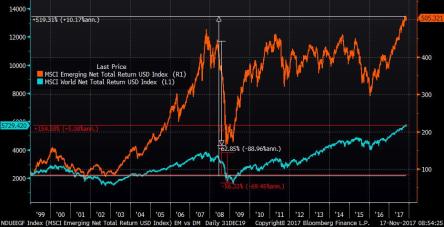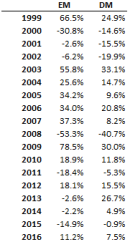Should you be holding longer- or shorter-term Bonds? As we know, this depends mainly on factors such as inflation and the level of economic activity in the case of developed markets government bonds as default risk is usually very low. Central banks will raise the benchmark interest rate if inflation is at target (usually 2% in developed economies) and economic growth is sound. Since central banks control short-term interest rates, shorter maturity bond prices will fall if policy rates increase. What happens to long-term interest rates? Long rates are influences mainly by supply and demand dynamics of the bond market. If the market thinks that inflation will rise, future cash flows will be worth less and investors will demand a higher premium to compensate for the loss in purchasing power so that long-term interest rates will rise too. Hence, monetary policy and markets’ inflation expectations will tell us which part on the yield-curve is most compelling at any point in time. Needless to say, monetary policy does not change month over month. However, interest rates can move substantially within a short period of time as we can see below for various 10-year interest rates.
 (more…)
(more…)


